In this issue:
Hail Damage, Current Crop Stages Make Decisions More Difficult — Dewey Lee, Retired UGA Corn Agronomist, “Does this grower need to use Thimet in-furrow now to fight thrips and tomato spotted wilt?” , Wheat harvest is around the corner !! , How do I manage my pre emerge herbicides if I have to replant my cotton ? , How do I control bermudagrass in cotton? , What else do we do this week?
Last week was another interesting week in Colquitt County agriculture. The wheat crop is drying down rapidly, and cotton and peanut planting is in full swing. The corn crop ranges from V4 to V13. The big story this week was the weather. Rainfall ranged from 0 to 4 inches, and a hail event occurred on Thursday night in the east part of Colquitt County. Below is the 7-day observed precipitation for our area. Below are examples of some of the hail damage from last week.

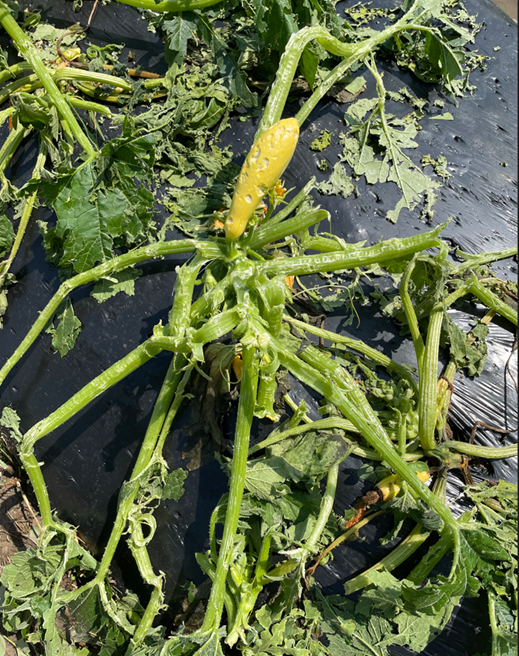
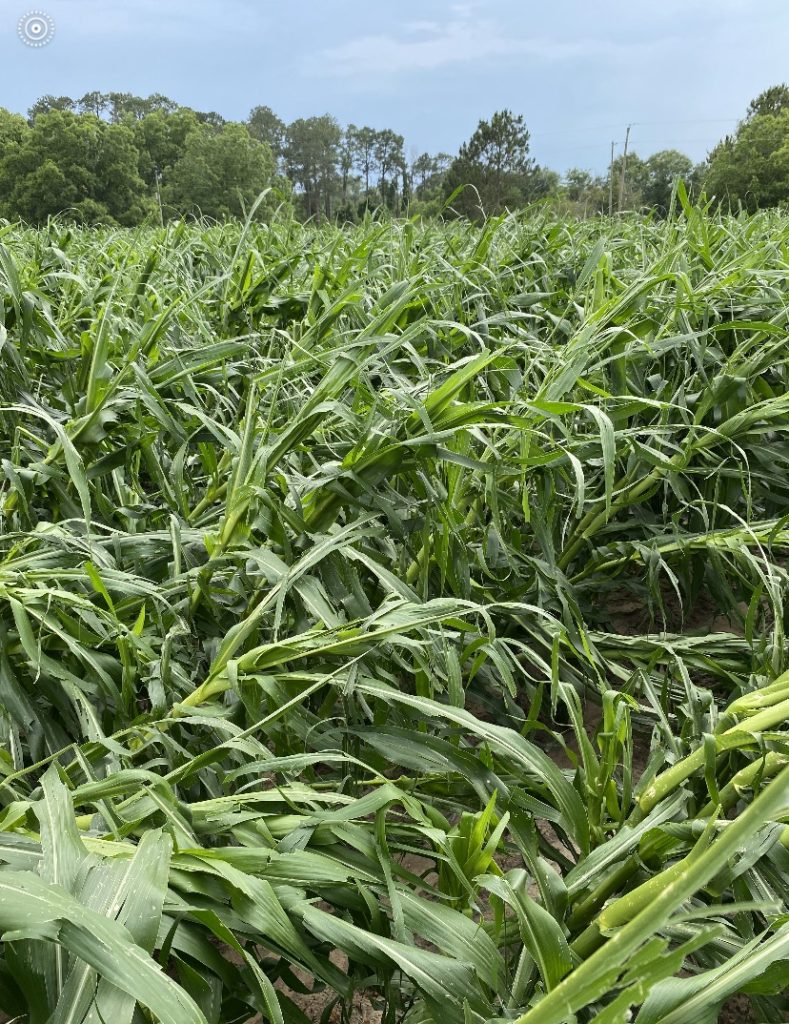
What about a fungicide on my hail damaged corn? It seems that hail has been more common this past spring and so do questions about fungicide use on hail damaged corn. Dr. Bob Kemerait says “Growers may hear that the use of certain fungicides, especially those with strobilurin components, are useful in such a situation as they protect wounded plants against disease infection and that the physiological benefits of the fungicides will be beneficial towards recovery of the plant as well. Though there is limited data available (mostly from the Midwest where hail injury is a more common problem), what research results that are there do not support increased yields or improved disease control where fungicides are used on early stage corn damaged by hail versus where the fungicides were not used. The worry of the growers in such situation is understandable; the use of fungicides to improve disease control and yield potential of hail damaged corn at this point is not recommended by UGA Extension.”
Use of fungicides, especially those that are know to have some physiological effect as well, has been touted by some for about 15 years for use to mitigate damage and loss to hail damage.
Bottom line from Bob:
- Most our important diseases of corn do not impact young corn.
- The diseases like northern corn leaf spot that might are going to infect the corn, hail damaged or not.
- Diseases that might impact hail damaged corn are not effectively managed with a fungicide anyway.
- The data to support specifically the physiological advantage of using a fungicide to help the corn recover is not there.
The following is a url of “Assessing Hail Damage in Corn” in the National Corn handbook: http://corn.agronomy.wisc.edu/Management/pdfs/NCH01.pdf .
Current Crop Stages Make Decisions More Difficult — Dewey Lee, Retired UGA Corn Agronomist
Georgia corn growers as a whole have a corn crop that ranges from just emerging to near tasseling. Tuesday morning, I had the privilege of talking to my counterparts across the U.S. from Minnesota to Texas to Virginia to Colorado as we meet bi-weekly by Zoom. Quite honestly, it was the same across the country. In some areas of Texas, the corn crop is tasseling while other areas are still planting. There are several northern states with 70 to 90% of the corn crop left to plant. Read More
“Does this grower need to use Thimet in-furrow now to fight thrips and tomato spotted wilt?” This question has been really common this week. I know that last year was a bad for tomato spotted wilt and is on minds of peanut growers. Dr. Bob Kemerait has some done a great job explaining how to use Peanut RX to answer the question.
The question that comes from many of you who have peanut growers in your county is “Does this grower need to use Thimet in-furrow now to fight thrips and tomato spotted wilt?” As you have probably heard Dr. Mark Abney say, there is never a bad time for a peanut grower to use Thimet at planting. I agree with that. However, if the questions asked is “Is there situation where a grower can safely plant with something other than Thimet,” the answer to that, based upon Peanut Rx (Peanutrx.org) is “yes, there is”. The picture included here is a screen shot sent to me by a consultant in SW Georgia who has a grower planting Georgia 12Y soon after 15 May. His grower would like to use imidicloprid in-furrow to save on cost. This consultant went to the Peanut Rx website and generated the attached graphic where “planting date window” is along the vertical axis and “risk points for spotted wilt” are along the horizontal axis. Here, “Green” means “low risk”, Yellow means “moderate risk” and “red” means high risk”. The consultant developed this where “Other than Thimet” was selected as the at-plant insecticide choice. As you can see, 5-point varieties, like Georiga-12Y, are considered “low risk” or “Green” without use of Thimet if planted after May 1st, as are 10 point varieties. This is especially true if planted after 15 May. Is there ever a “bad time” to plant peanuts with Thimet in Georgia? No. Can growers save money and plant with imidicloprid and keep risk to spotted wilt low? Yes, IF they carefully follow Peanut Rx. To such safely requires low risk varieties and low risk planting dates.
Special thanks to Dr. Barry Tillman for developing the initial program to generate such graphics from Peanut Rx and to
Dr. Joe Laforest for developing the Peanut Rx website https://peanuts.caes.uga.edu/extension/peanut-rx.html.

Wheat harvest is around the corner !! Last week, I did check the moisture on some area wheat. The moisture was running between 11 and 15 percent. Soft red winter wheat easily sprouts when the grain is exposed to rainy conditions after maturity. Harvest the crop as soon as possible to avoid field losses and to maintain good-quality grain. Dry the grain if harvesting above 15% moisture. Usually, wheat can be easily harvested between 16 and 18% moisture.
How do I manage my pre emerge herbicides if I have to replant my cotton ? I have received a call or two about replanting cotton. According to Dr. Culpepper, if previously used herbicides do not pose an injury risk, it is best to run the planter back in the original drill without any soil preparation if conditions permit.
If reworking the seedbed is necessary then the following procedures are suggested:
Strip tillage: Rerun the strip-till rig which should include ripper shanks followed by planting; make certain the operation does not concentrate the previously applied herbicide in the planting zone. After replanting, apply a PRE herbicide mixture that includes both a non-selective herbicide to control emerged weeds/cotton and a residual herbicide. The residual herbicide should be different chemistry than that used with the original planting. It is likely the residual herbicide used with replanting may offer limited residual Palmer control; thus, the first POST application may need to be made quickly.
Conventional Tillage: For those who do not have strip-tillage implements, using shallow tillage such as light disking can be helpful. Do not re-bed without first disking. Re-bedding without disking can lead to severe injury. The amount of time that has passed and the amount of rainfall that has occurred between herbicide applications and replanting will determine the need for additional herbicides. In general, additional herbicides will be needed when replanting but one should switch residual herbicide chemistry from that used during the first planting.
Killing emerged cotton: Roundup, paraquat, Aim, and/or Liberty are encouraged to control emerged weeds and cotton when replanting. Paraquat or Aim will control small emerged cotton. Liberty is also effective controlling cotton as long as it is not a cultivar tolerant to Liberty.
How do I control bermudagrass in cotton? For success, fall applications are needed. At least 7 days before frost, apply Roundup at 2.25 lb a.e./A in single application or two applications 7 days apart at 1.13 lb ae/A. During the following season implement both Roundup and postemergent graminicides when feasible. Postemergence graminicides (Select, Select Max, Fusilade DX, Assure II) are effective options when bermudagrass has runners less than 6”; however, a tank mix of Roundup plus a graminicide would likely be the most effective option when labeled.
What else do we do this week? This has been a fun week. I have the opportunity to establish a peanut variety plot, evaluate several biological treatments on corn, and plant a nematode test at Packer Park. This on-farm research could not be possible without the support of local producers and industry such as Dyna-Gro, Bayer, Helena, Vive Crop Protection, Valent, Doerun Peanut, Corteva, Sunbelt Ag Expo, Whit Benton, and Colquitt County Young Farmers. In the first part of the week, we planted a peanut variety. We are going to evaluate the following peanut varieties: GA 16HO, GA-21GR. GA-06G, TifNV-HG, GA-22MPR, and FloRun-T61.
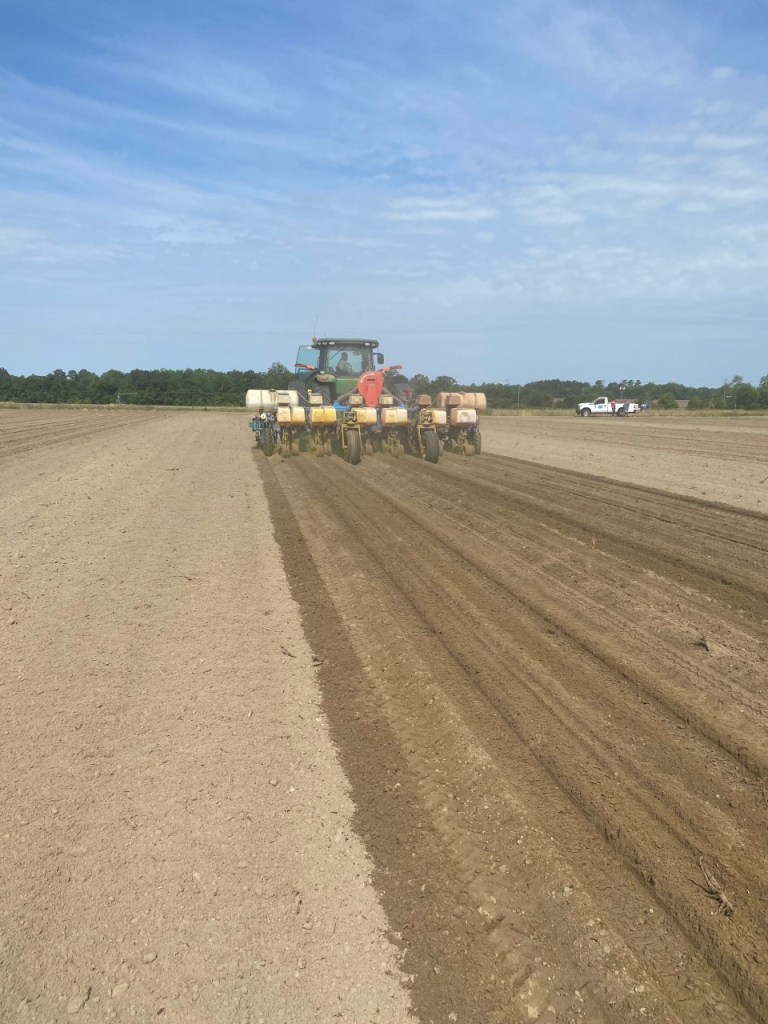
Mid part of week, the last treatments were applied to a corn study conducted at the Sunbelt Expo.
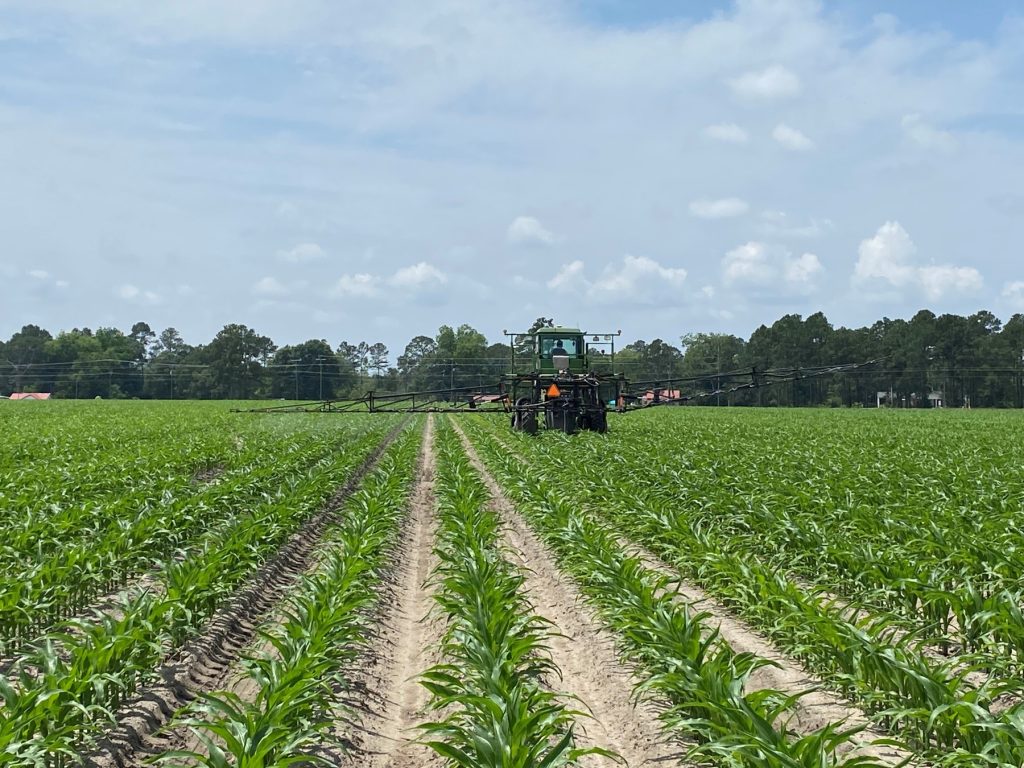
The nematode plots were planted at Packer Park thanks to Heath Cross, Colquitt County Young Farmers. This years test will consist of numerous infurrow treatment planted with non resistant nematode cotton varieties and comparing them to nematode resistant variety.
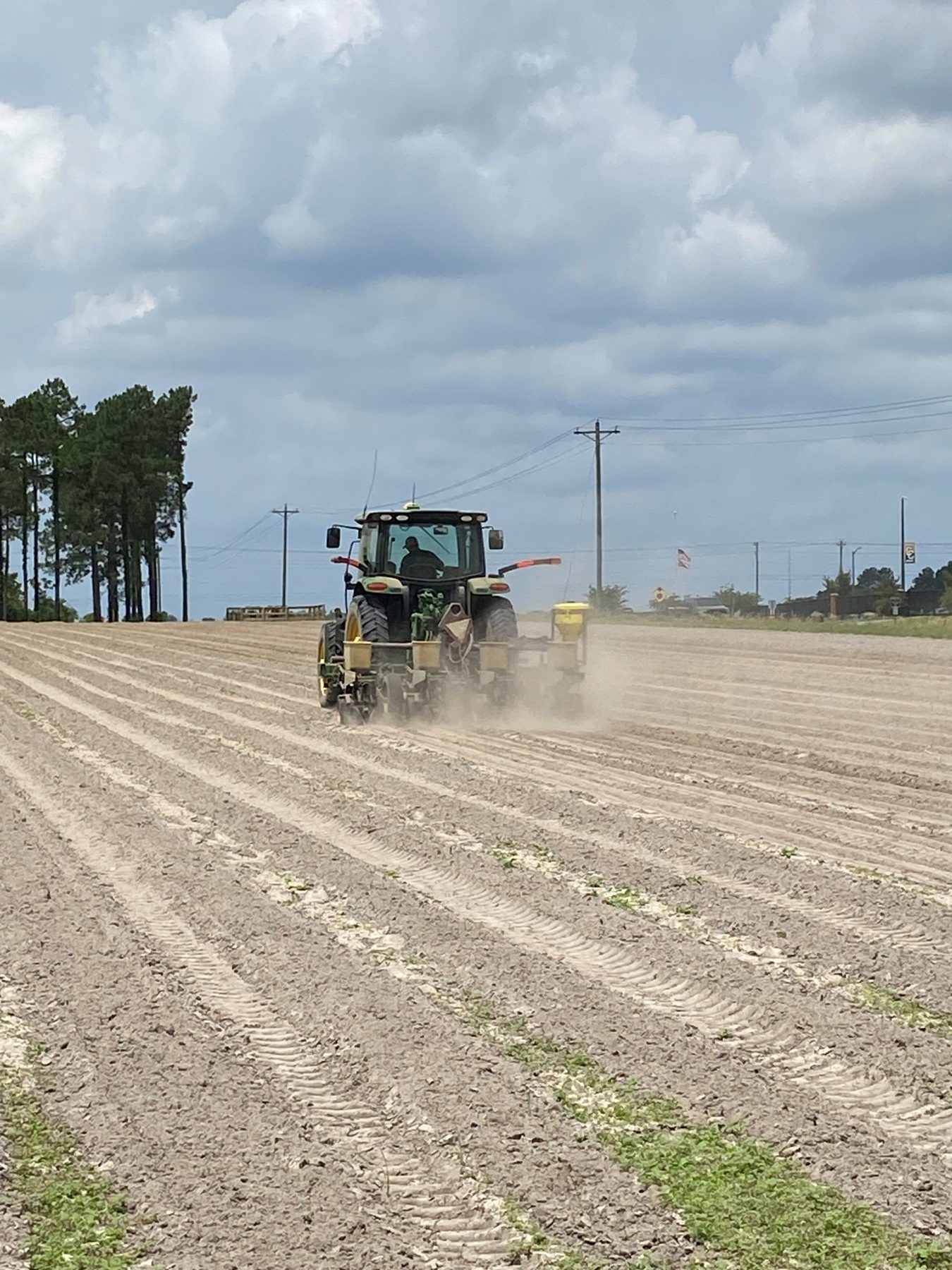
If you have question please contact your local county Extension agent.
Have a great week,
Jeremy M. Kichler
Colquitt County Extension Coordinator
